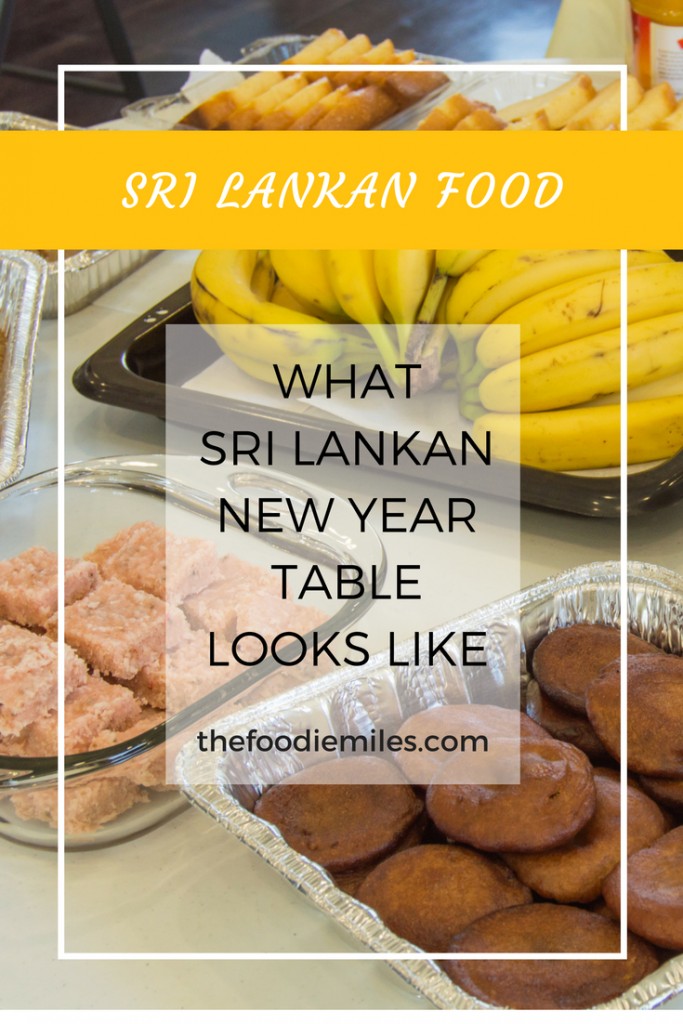
For some people New Year starts in January, for others it starts in April. That came as a surprise on my first trip to Sri Lanka, when I found myself unable to get groceries, eat outside or even take a bus on the 13th of April. In that first year Sinhala and Tamil New Year celebrations just went past me. I was at the beach with my foreign friends enjoying the ocean, loud music and alcohol – as far as it gets from traditional way of celebrating.
The next few times, though, were spent with my soon-to-become family around the table full of traditional Sri Lankan sweets and not-so-traditional-but-always-present butter cake.

Table set on my first Sinhala New Year celebration in 2013
One day I will tell you a story of my very first Sinhala New Year: a story of a hungry girl waiting for 5 hours to eat because you don’t just dig into food any time you want on New Year’s day, you wait till the time set by astrologist. It is also a story of many shocks including that of setting a fire in the middle of the living room and a strange process of exchanging money back and forth.
But today is all about Awurudu treats (“Aluth Awurudu” means “New Year” in Sinhala, therefore Awurudu treats means New Year specialties). To be completely honest, when I saw the table for the first time I was quite surprised. You see, New Year table in Russia usually looks like it could be enough for a small army with all the appetizers, cold cuts, mayo-dressed salads and so on. Sri Lankan New Year table looks more like a candy bar to my mayo-loving self.
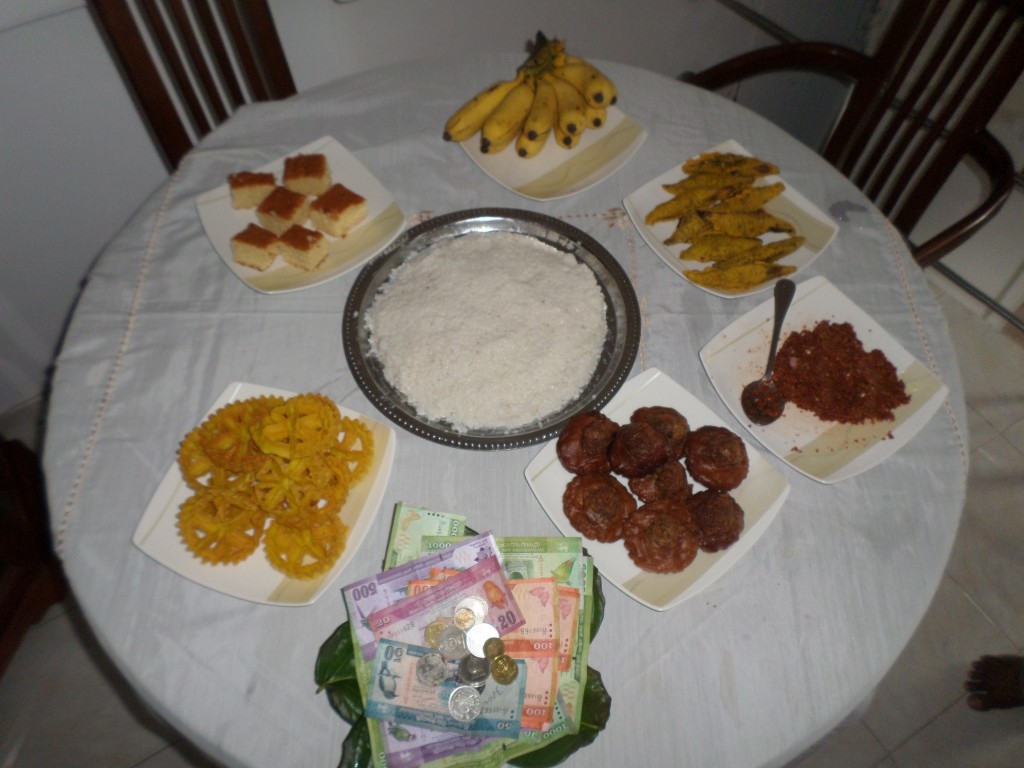
My second Sinhala New Year celebration in 2014. Kiribath is in the center of the table.
Kiribath
The main dish and the centerpiece of the table is usually kiribath – rice prepared with coconut milk – that’s exactly what the name stands for “kiri” means “milk” and “bath” means “rice” (by the way, “bath” is pronounced the same way as English “but”). Adding coconut milk gives rice a distinct flavor and sticky consistency. So you can place it on a flat plate and pat it down with a spoon. Once rice is set it is cut diagonally to form diamond shaped pieces. Have you ever thought to use words “cut” and “rice” in one sentence? That was a total revelation to me.

2016 Awurudu celebrations in New Hampshire, USA (There were so many plates we had to move kiribath to another table, but it’s there!)
Rice is served with lunu miris – a relish made of diced red onion mixed with chili and lime juice (red colored paste on the picture above). But the beauty of kiribath is that, depending on your preference, you can make it sweet or savory. So if you have a sweet tooth pour some kithul treacle (local honey) over and eat it with a banana.
Kiribath and bananas are two things you will always see at celebrations, auspicious moments or any kind of important events: they symbolize prosperity. The rest of the dishes are snacks and sweets. Some of them are very traditional Sri Lankan, some not so traditional, but over time they became common to have on the table for New Year.
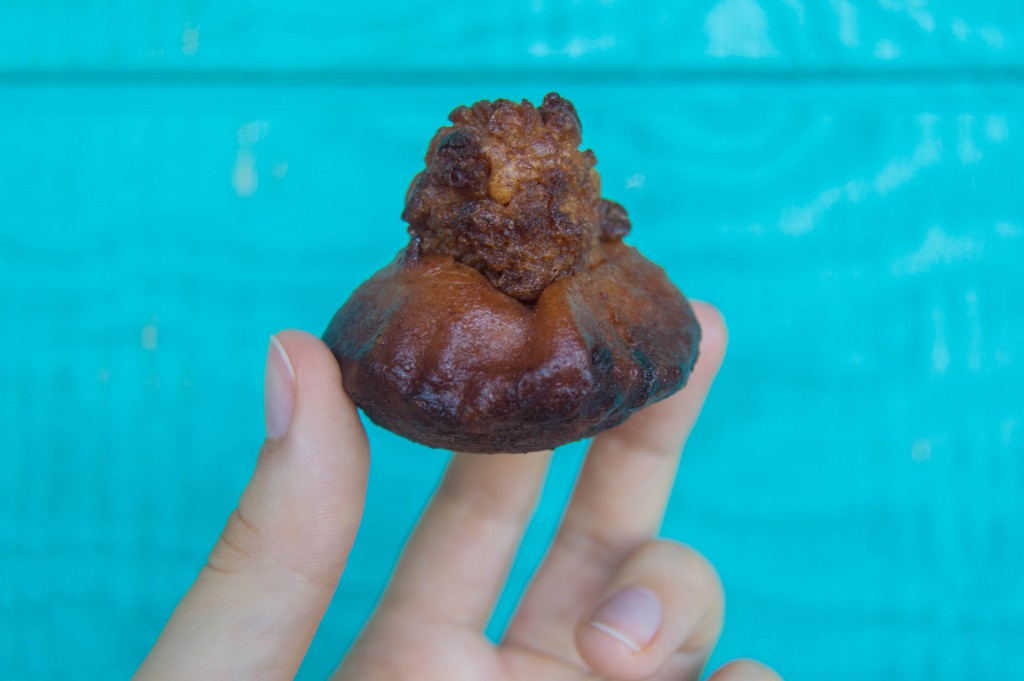
Perfectly shaped konde kawum
Konde Kawum
One of the oldest traditional sweets is Kawum and it has several varieties. Konde Kawum – the most famous of all – is prepared using rice flour and kithul treacle. The deal with Konde Kawum is that getting the right shape – which reminds me of UFO – is extremely hard. It takes years of practice and hundreds of Konde Kawums to master this skill. It is even harder to explain the process of making it. In short, the main difficulty is to coordinate hands when deep frying Kawums: while one hand holds a slotted spoon and throws oil on top of round-shaped batter, the other one holds a long wooden stick inserted in the middle of the Kawum and twirls it. Throwing oil on top makes the Kawum cook through and twirling the stick inside brings out that ball on top. The ball is called Konde, hence the name.

A plate of handi kawums
Handi Kawum
If you are too busy, too lazy or just can’t be bothered with all that hustle described above there’s an easier variation of Kawum called Handi Kawum. “Handi” means “spoon” in Sinhala: the round flat shape of Handi Kawum reminds of traditional spoons made from coconut shells in Sri Lanka. The batter is made in a similar way as for Konde Kawum and then simply poured into hot oil to form a round. No twisting or twirling: just flip the round and it’s ready. The other types of Kawum are not simple variations of Konde Kawum but different sweets altogether.
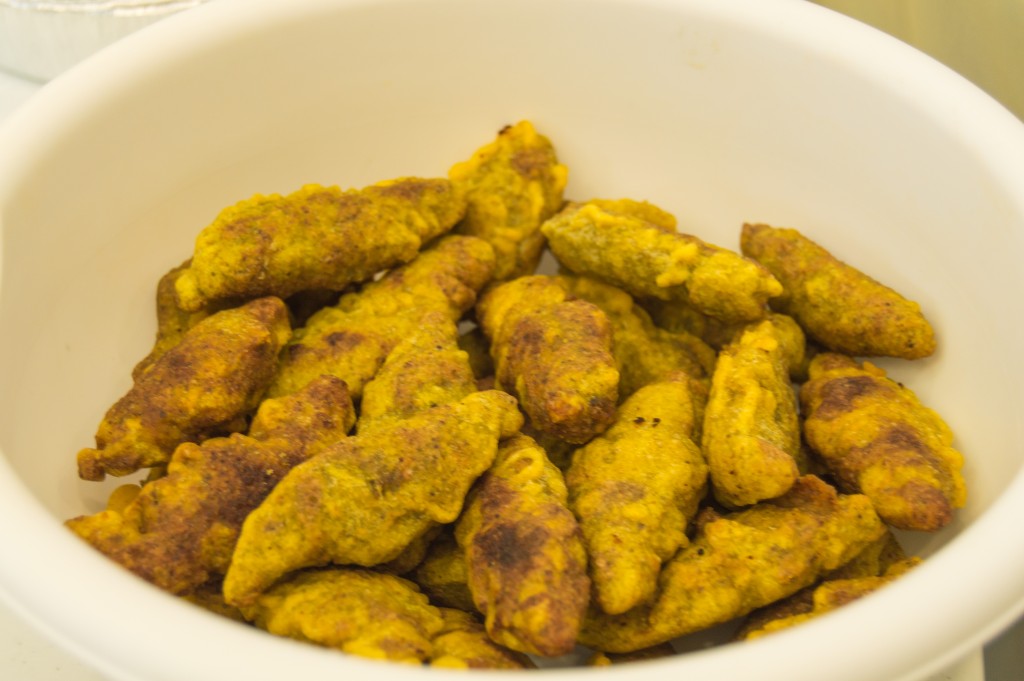
Mung Kawum
Mung Kawum got its name from the main ingredient – mung bean which is also known as green gram. This treat is deep fried too but what makes it stand out is the tangy grainy paste inside. This paste is a mixture of mung bean flour, rice flour and kithul treacle. The greenish-yellow color comes from adding turmeric to batter. Mung Kawum seems less sweet and less oily than the other treats to my palette which made it my favorite.
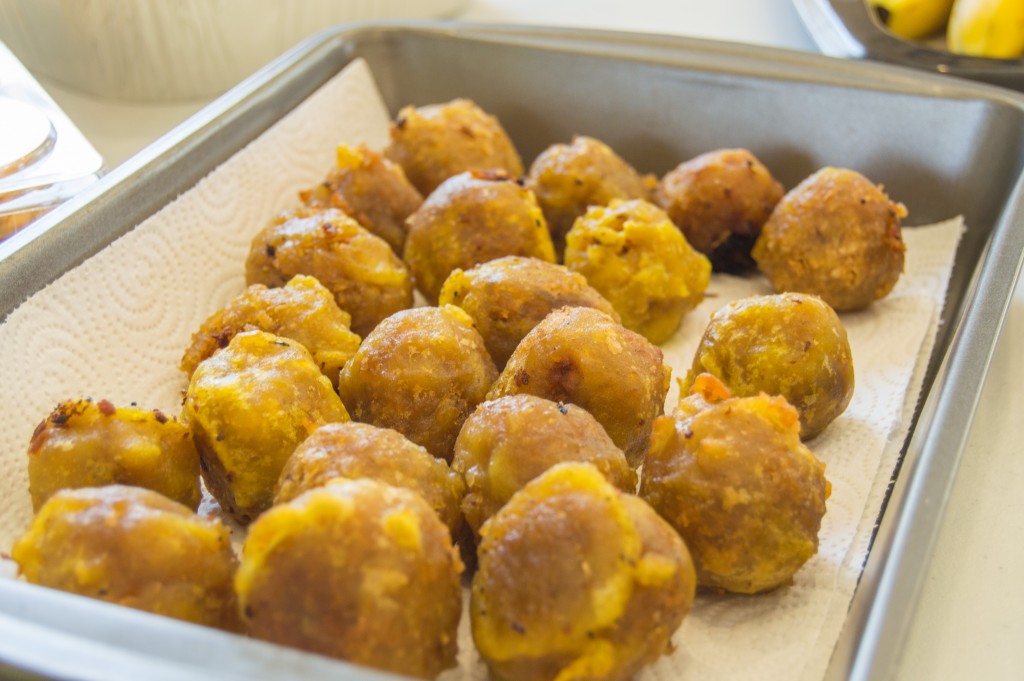
Narang kawum got its name form the word “narang” which means “mandarin” in Sinhala
Narang Kawum
“Narang” means “mandarin” in Sinhala and here again it refers to shape of the sweet treat – round as mandarin. This type is common for southern parts of the island and cities like Matara and Galle. Dough is prepared by mixing jaggery (sugar made of kithul treacle) with grated coconut and spices like cardamom and vanilla. The dough is shaped into balls that are – big surprise! – deep fried in coconut oil.
It’s hard to ignore the fact that all of the sweets are deep fried and I was thinking a lot about the possible reasons. The answer came from my good friend and a wonderful cook Yashasvi Kannangara (check out her Instagram @the_foodie_in_me) who explained that,
“back in the days refrigerators were not available in hot and humid Sri Lanka. So deep frying was a way of preserving food for longer without having to cool it down.
Another probable cause is that cooking was limited to stove. Without oven you could use two techniques: steaming and frying. That’s why you will not find a traditional Sri Lankan treat that is baked.”
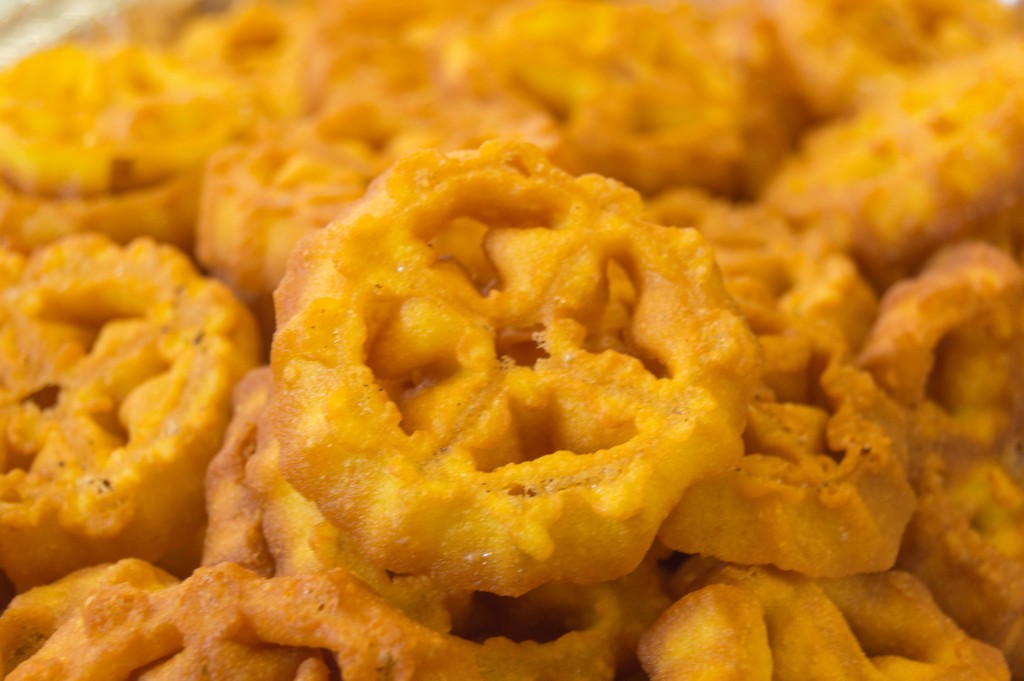
Kokis
If I were to find an analogue for Kokis in Western cuisine I would choose chips. Kokis are as crunchy, oily and fast to disappear. No wonder they, too, are deep fried. Only this time a special decorative mold is used to make a shape of a flower. The mold is coated in batter and then dipped into hot oil. The trick is to carefully release Kokis from the mold without breaking it. The yellow color, as in case with Mung Kawum, comes from turmeric. Although considered a traditional Sri Lankan treat, Kokis is believed to be of Dutch origin.
Since we covered all the oily foods let’s continue with sugary ones. Not that the above treats have little sugar but what you are about to see next is a sugar bomb!
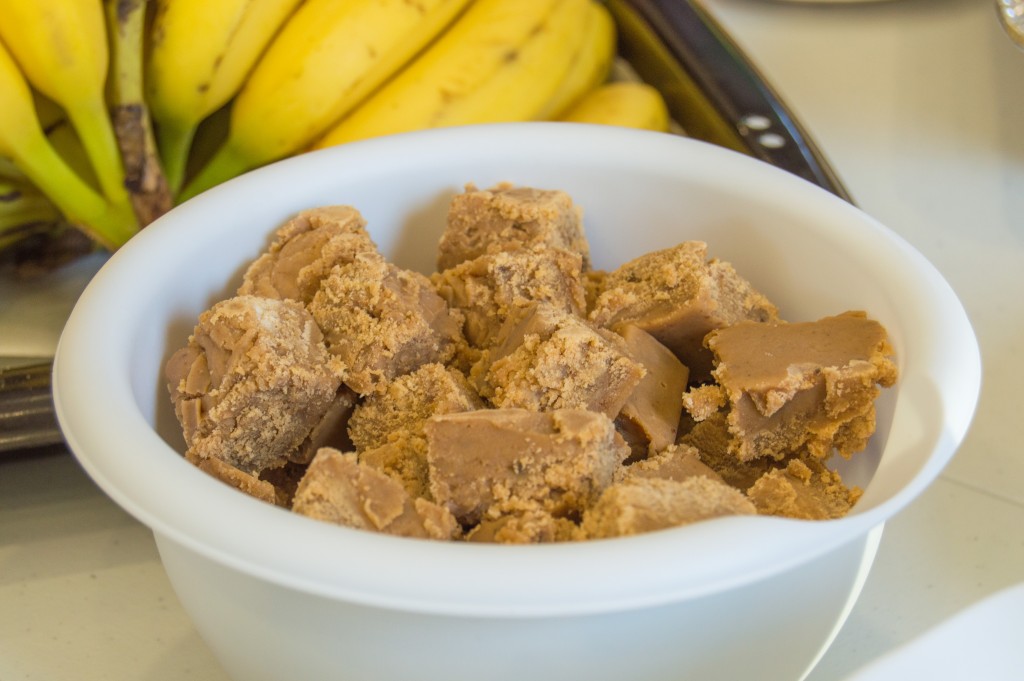
Milk Toffee
Unlike the treats I described above toffees are not made only for New Year, they can be prepared for any occasion or even for no reason at all. Milk toffees are made by mixing sugar syrup with condensed milk. Cashew nuts and vanilla can be added to improve flavor. The mixture is poured into a pan and cut in pieces after setting.
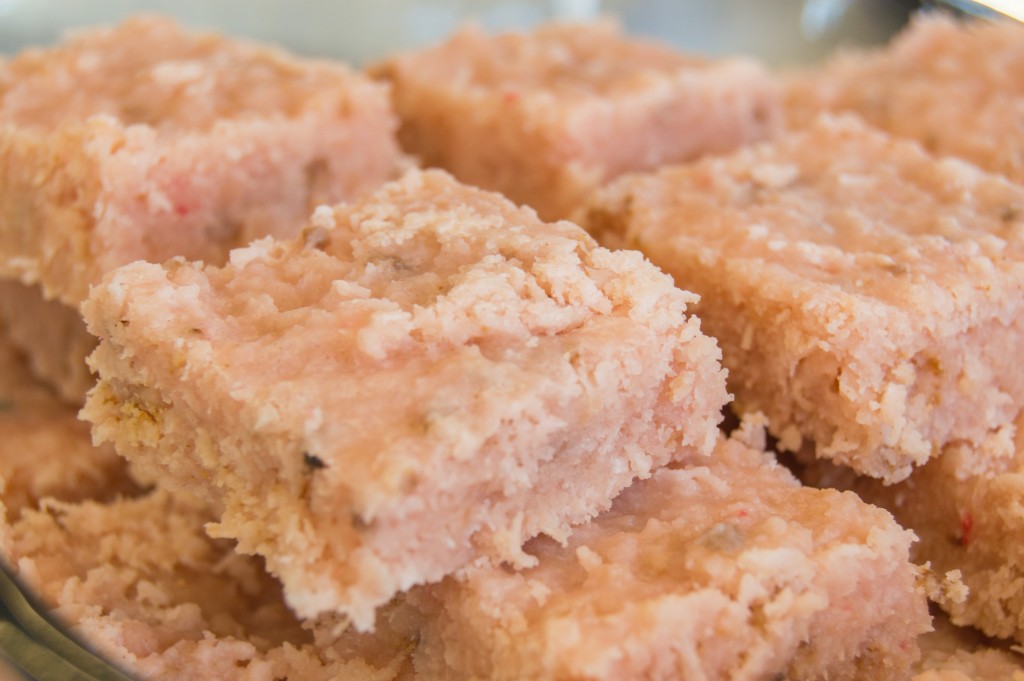
Pol Toffee
Pol toffee, or coconut toffee (“pol” is Sinhala for “coconut”) is made in a similar manner but additionally grated coconut is mixed in.
“Such overindulgence in sugar during New Year celebrations can be explained by lack of sweets back in the days. With no Western influence there were no cakes or candies in shops. So Awurudu was the only time of the year when people could have something sweet.”
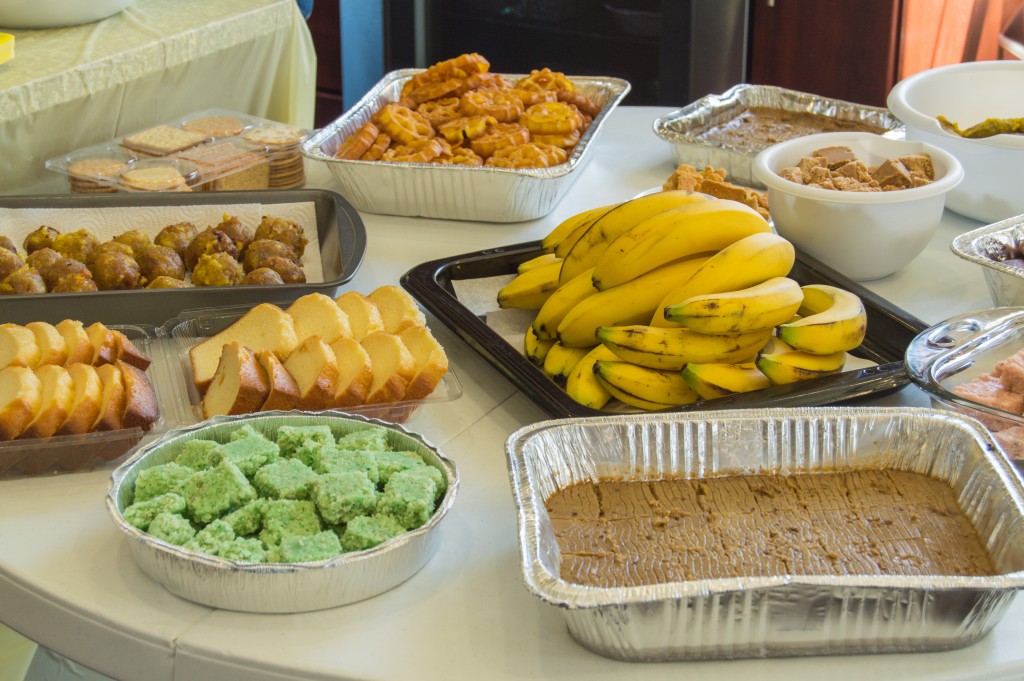
Butter Cake
One thing that did make its way to most of Sri Lankan households from the West is butter cake. Although it is in no way connected to Awurudu celebrations, I guess, it brings festive mood and holiday spirit. But don’t get confused by this seeming frivolity: vanilla flavor is pretty much as far as you can go. Maybe chocolate but that is the limit.
This year we were far from Sri Lanka on New Year but nevertheless had a great day celebrating it with friends in New Hampshire. The table was beyond expectations with all kinds of kawums, kokis and toffees. I allowed myself to relax since there were at least 6 Sri Lankan women preparing food for the occasion who I simply admire for the hard work of finding the right ingredients and spending hours in the kitchen.
All the bright and colorful pictures are shot this year. And all the old and not-so-pretty ones are from my archives. I didn’t know what a digital camera is back then, so the quality leaves to be desired, but those photos give a good idea of traditional celebration.
Big thank you to Gayani, Tani, Gimhani, Keshi, Indima, and Yash for preparing this feast. And a special thanks to Yash for answering a hundred questions about ingredients and cooking methods.



